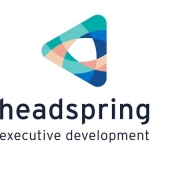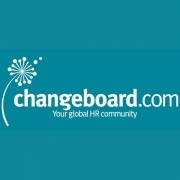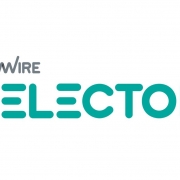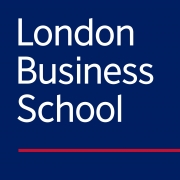The covid-19 pandemic and subsequent acceleration of digital transformation have forced organisations to innovate rapidly, change their products and services, and remain flexible to adapt to an ever-changing landscape. These significant changes have prompted a resurgence of the debate about the optimal organisational structure.
Over the past few years, there has been a welcome shift toward client-centricity with organisations adopting more agile structures – centred on products, teams, and projects – and forming both internal and external networks of teams that are generally empowered to communicate, coordinate, and make decisions.
Yet, given the volatility of our times and challenges related to digital communications and employee wellbeing, there are certain limitations to the model. A recent study, for example, found that “network centric organisation does not necessarily lead to higher perceived situation awareness or better understanding of the situation”.
We asked three experts from our global educator network to share their advice on the key points to be aware of when adopting a new organisational structure. Their answers reveal that while the networked-based structure seems to be the way forward to many teams, leaders need to be aware of issues related to the flow of decision making, talent retention and purpose.
1. The rise of ‘extreme teaming’
The move towards network-based structures is a recent evolution, according to author and thought leader Peter Fisk. “A decade ago, around 80 percent of employees had functional roles, the rest seconded to ad-hoc projects. Today, that ratio is reversed. Few employees now have fixed roles. Formal job titles in outdated organisational charts have given way to a more fluid deployment of talent, by project, to manage constant change”, says Fisk.
In a recent article, Fisk states: “Networks, whether organisational or social, are powerful systems. “Every additional participant creates new connections, capable of driving the exponential growth of today’s network-based start-ups.”
At the heart of these network structures is the concept of “extreme teaming”, Fisk continues. “They assemble the best people for the job, energised by customers not managers, building psychological safety, and a collective commitment to deliver excellent, innovative results.”
In his recent book Next Generation Leadership, business educator and adviser Adam Kingl explores how organisations can enable younger talent to thrive. He sees the shift toward networked structures as a competitive advantage:
“Companies that reimagine how work is organised around projects and freelance experts will be sailing on a rising tide”, said Kingl. “The volume and strategic importance of projects is growing. About one-fifth of the world’s economic activity per year – $12 trillion – is now organised around projects.”
Over the next decade, Kingl says, “companies are expected to experience over two-thirds’ increase in project work”. “As the operating environment becomes more volatile and complex, businesses need a new playbook to seize opportunities faster, an adaptive approach to talent and the skillsets that one might need at any point in time. Organising company structure around project work may make more sense.”
2. Leaders become decision aggregators
Joe DiVanna is a Cambridge-based management consultant and author. As well as working regularly with Headspring clients on custom programmes, he runs his own innovation think-tank providing research and advisory services to the financial services industry. He says that the transition from a hierarchical to a network-based structure is essentially a change in how decisions are made. More traditional structures were based on the assumption that upper levels had “more collective knowledge and experience than the level beneath it” and therefore decision-making flowed up and down the pyramid. In network-based structures, this changes completely.
“This evolution strives to push decision making close to the action where the decision is needed”, says DiVanna. “As each node on the network becomes more and more empowered the entire role of senior leadership changes from a control point to approve or disapprove issues to a consultative resource to be consumed by the organisation”.
Yet, he argues, this change in organisational structure does not relinquish decision making of the senior leadership to the business unit: “What has changed is the parameters of what decisions can be used to empower people at all levels of the organisation”, he said.
As organisations go through this transition, DiVanna continues, “decision making often becomes fragmented. Not all decisions can be handled by the business unit. As a result, exceptions which need decisions become the underlying challenge (which is also an opportunity) for senior management to act as a decision aggregator.”
3. Mind the generational gap
While the network-based structure can help organisations move faster, Kingl warns that there is a significant generational gap when it comes to the acceptance of change and the adoption of networked structures.
“When I ask audiences to consider a world where companies comprise just a dozen or so executives and hundreds of freelance project directors and contractors under them – the gig economy writ large – Baby Boomers and older Gen Xs in the room appear ashen-faced and horrified, while the Gen Ys beam with optimism”, Kingl said.
In Kingl’s opinion, employers will have three possible responses to the inconstant tides of their younger workforce:
- Fight it and do everything in one’s power, spending whatever money is necessary, to keep talent,
- Embrace it and create the twenty-first century community of (mostly) freelancers,
- Select a hybrid path, distinguishing between talent that the company must keep at all costs and employees who one is prepared to let go, because their knowledge or expertise is replicable, or their functions may be completed more efficiently by contractors or business partners.
4. Your structure defines your culture
“Organisation structures define companies – culturally and innovatively, revealing both opportunities and limitations”, concludes Peter Fisk. “Henry Ford’s hierarchical business model that produced low-cost cars a century ago no longer reflects today’s organisational needs: to be fast and agile, human and technological, collaborative and creative, personal and global.”
According to Kingl, as the operating environment becomes more volatile and complex, “enterprises may choose to organise themselves differently, to be able to deliver more and more complex projects and initiatives in this dynamic operating environment.”









